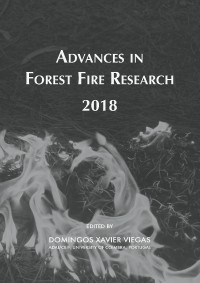Please use this identifier to cite or link to this item:
https://hdl.handle.net/10316.2/44657| Title: | The role of fire size, geometry, and intensity, in “extreme” plume development | Authors: | Badlan, Rachel L. Sharples, Jason J. Evans, Jason McRae, Rick H. D. |
Keywords: | Wildfire simulation;fire-atmosphere interaction;deep flaming;pyroconvection;pyrocumulonimbus | Issue Date: | 2018 | Publisher: | Imprensa da Universidade de Coimbra | Journal: | http://hdl.handle.net/10316.2/44517 | Abstract: | Fire spread associated with violent pyrogenic convection is highly unpredictable and is difficult to suppress. Wildfire-driven convection may generate cumulonimbus (storm) clouds which are also known as pyrocumulonimbus (pyroCb). Research into such phenomena has tended to treat the fire on the surface and convection in the atmosphere above as separate processes. This research investigates the relationship between the characteristics of the surface (i.e. the fire) - its shape, size and intensity - and the resultant convective plume. This is achieved using a coupled fire-atmosphere model (the Weather Research and Forecast model (WRF)) to identify the combined effects of the fire behaviour and atmospheric structure on the occurence of pyroCb events. This is achieved with idealised model runs with a static heat source of variable dimension and intensity in order to examine the plume's sensitivity to the size and intensity of the fire, and the stability of the atmosphere in which it develops. It also considers the role of geometry of the spatial expanse specifically, as large areal fires (so-called "deep flaming" events) have been associated with the development of pyroCb. Moisture from either the fuel or combustion is not included in the surface fluxes at this point in the study. Initial results indicate that both the size and intensity of the fire are the variables which control the height to which the pyroconvective plume may rise. It also suggests that given a large enough fire source (deep flaming), these factors are the key determinanats of whether the plume will couple with the atmosphere and that the atmospheric stability may not be as influential in the development of violent pyroconvection if deep flaming is occuring. One of the metrics used to determine the pyroconvective potential of a plume is the total energy released, which is a function of the fire's area across the ground and intensity of the heat. This research also takes into account the shape of the fire by investigating the ratio between the perimeter of the fire and the area it encompasses. Our research determines how the the shape of the fire affects the height of the plume by comparing circular, square and rectangular fires of varying length and width which represent the difference between firelines and areal fires. This sensitivity study of fire geometry reveals that the perimeter/area ratio influences the amount of entrainment that the plume experiences and therefore the height to which the plume rises before it loses buoyancy. These results will be used to aid in the prediction of blow-up fires and may be useful in determining where fire agencies deploy their limited resources. | URI: | https://hdl.handle.net/10316.2/44657 | ISBN: | 978-989-26-16-506 (PDF) | DOI: | 10.14195/978-989-26-16-506_140 | Rights: | open access |
| Appears in Collections: | Advances in forest fire research 2018 |
Files in This Item:
| File | Description | Size | Format | |
|---|---|---|---|---|
| the_role_of_fire_size.pdf | 941.46 kB | Adobe PDF |  |
Items in DSpace are protected by copyright, with all rights reserved, unless otherwise indicated.
